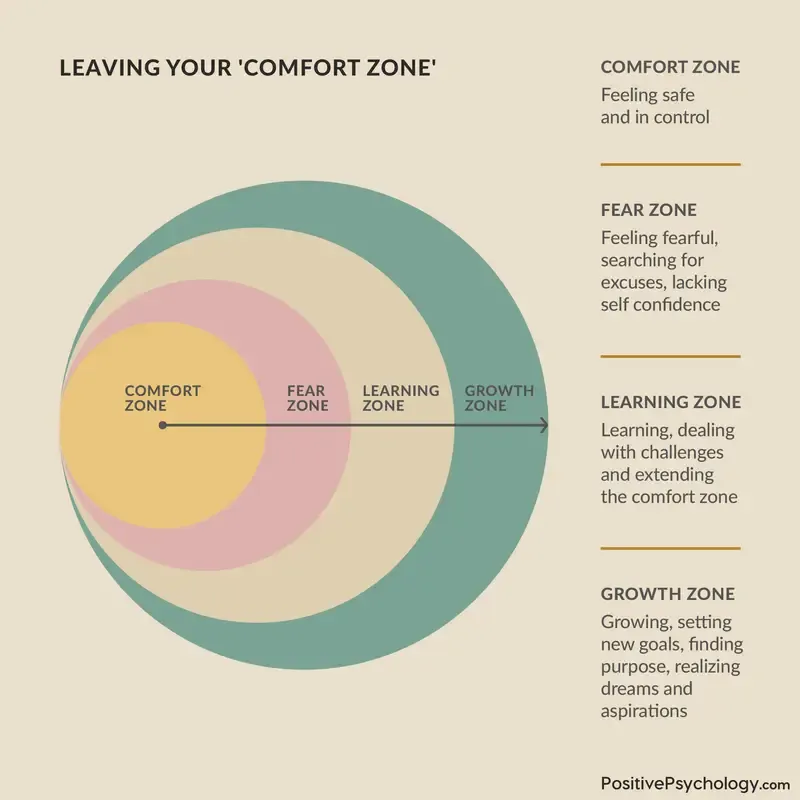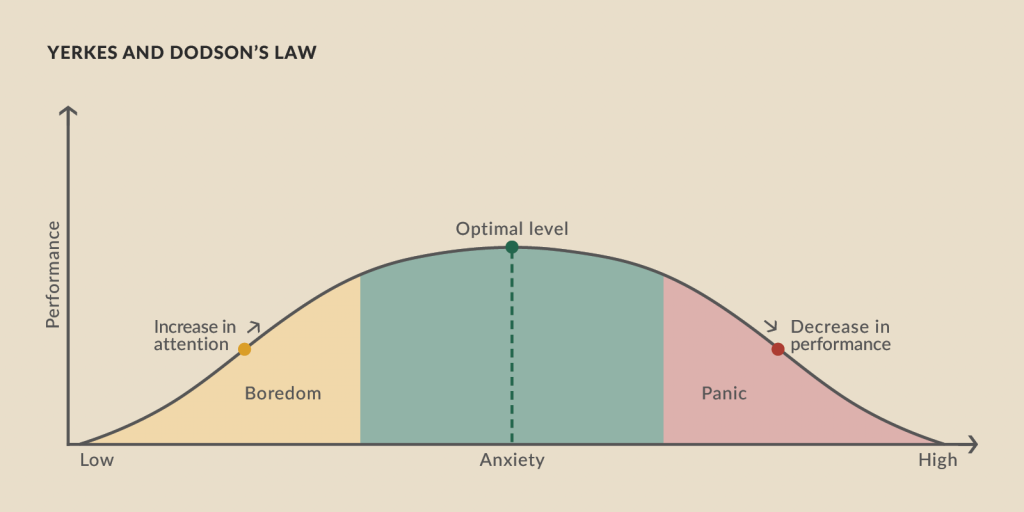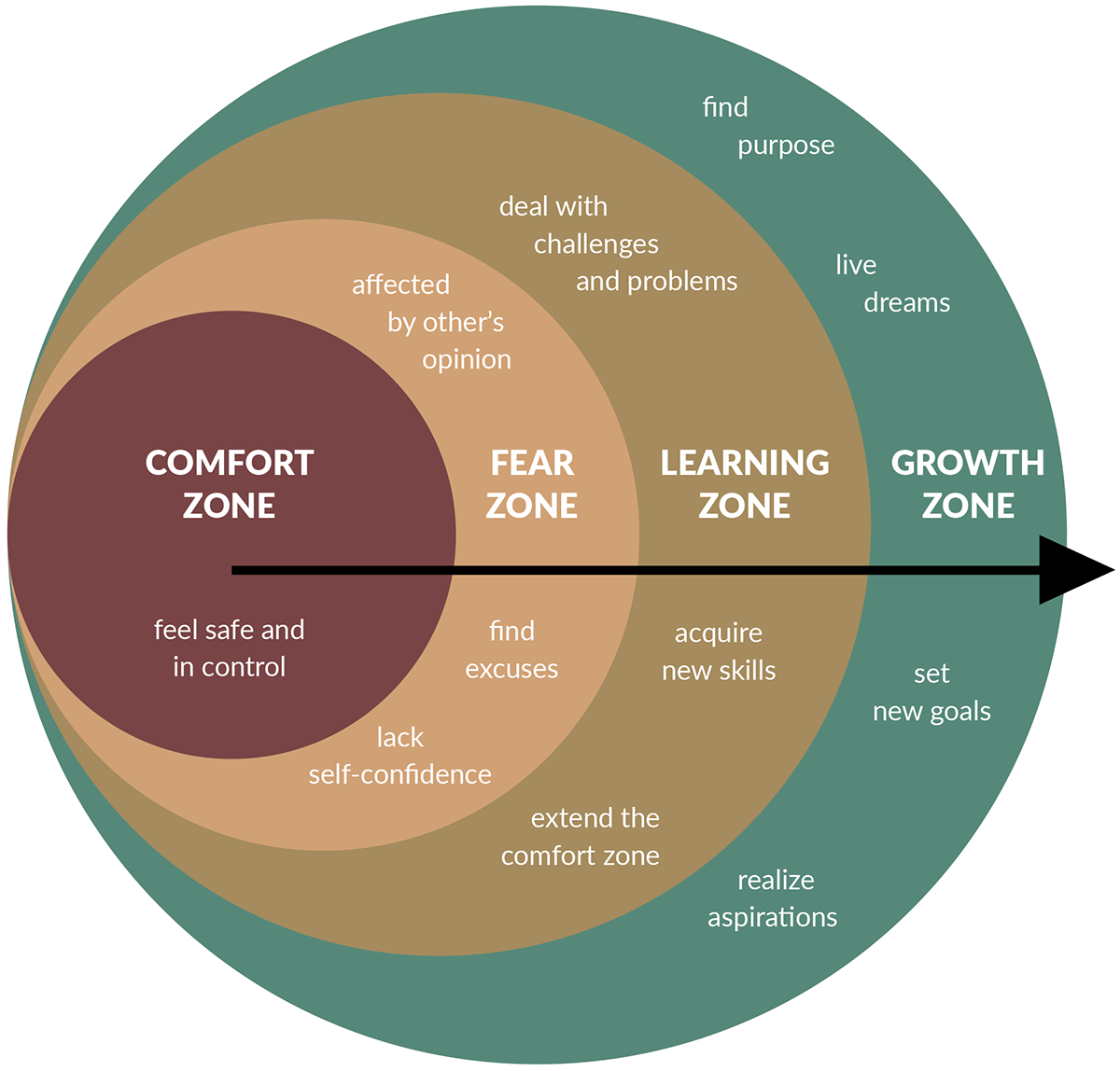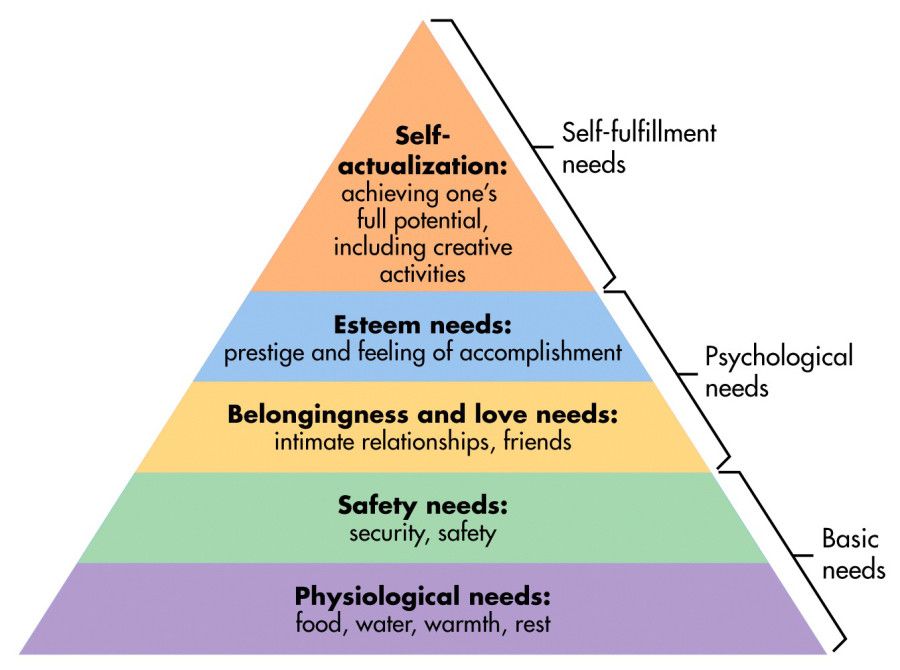How to Leave Your Comfort Zone and Enter Your ‘Growth Zone’
 Life is full of opportunities to step outside the comfort zone, but grabbing hold of them can be difficult.
Life is full of opportunities to step outside the comfort zone, but grabbing hold of them can be difficult.
Sometimes the problem is not being aware of reasons to do so. After all, if the feeling of comfort signifies our most basic needs are being met, why should we seek to abandon it?
What holds people back most of the time is their frame of mind rather than any distinct lack of knowledge.
This article looks at the shifts in thinking required to step outside of comfort and into personal growth. Along the way, we’ll outline useful tools, tactics, and examples to help make leaving the comfort zone as rewarding as possible.
Before you continue, we thought you might like to download our three Goal Achievement Exercises for free. These detailed, science-based exercises will help you or your clients create actionable goals and master techniques to create lasting behavior change.
This Article Contains:
What Is the Comfort Zone in Psychology?
Now firmly embedded in cultural discourse, the metaphor of ‘leaving one’s comfort zone’ became popular in the 1990s. The phrase ‘comfort zone’ was coined by management thinker Judith Bardwick in her 1991 work Danger in the Comfort Zone:
“The comfort zone is a behavioral state within which a person operates in an anxiety-neutral condition, using a limited set of behaviors to deliver a steady level of performance, usually without a sense of risk.”
Within the comfort zone, there isn’t much incentive for people to reach new heights of performance. It’s here that people go about routines devoid of risk, causing their progress to plateau.
But the concept can be traced further back to the world of behavioral psychology.
In 1907, Robert Yerkes and John Dodson conducted one of the first experiments that illuminated a link between anxiety and performance.
They saw that mice became more motivated to complete mazes when given electric shocks of increasing intensity – but only up to a point. Above a certain threshold, they began to hide rather than perform.
Corresponding behavior has been seen in human beings. This makes sense because in response to anxiety-provoking stimuli, the options are either fight (meet the challenge), flight (run away/hide), or freeze (become paralyzed).
The Yerkes–Dodson Law (Yerkes & Dodson, 1907) is true not just for more tangible types of performance, such as being given a stressful new task at work, but also in many life areas such as understanding ourselves, relating to others, and so on.
The core idea is that our nervous systems have a Goldilocks zone of arousal. Too little, and you remain in the comfort zone, where boredom sets in. But too much, and you enter the ‘panic’ zone, which also stalls progress:
From Comfort Zone to the Growth Zone
When leaving the comfort zone, fear doesn’t always equate to being in the panic zone. As the below diagram shows, fear can be a necessary step en route to the learning and growth zones:
Source: PositivePsychology.com Toolkit – ‘Leaving The Comfort Zone’
It takes courage to step from the comfort zone into the fear zone. Without a clear roadmap, there’s no way to build on previous experiences. This can be anxiety provoking. Yet persevere long enough, and you enter the learning zone, where you gain new skills and deal with challenges resourcefully.
After a learning period, a new comfort zone is created, expanding one’s ability to reach even greater heights. This is what it means to be in the growth zone.
It’s important to state that like most behavioral change attempts, moving into the growth zone becomes harder without some level of self-awareness. Thus, it can be beneficial for clients to consider the following:
- How big are their zones?
Across every life domain, everyone’s zones vary in size. To leave your comfort zone, you must appreciate its outer limits. Similarly, you must develop an intuitive sense of where your panic zone lies. Taking on challenges that lie somewhere in between will stretch you, leading to growth and learning. - What are their strengths?
Understanding and capitalizing on personal strengths can be of great use. Most people have experienced leaving the comfort zone in at least one area of life, and there are usually plenty of insights to be uncovered from this experience.
In reality, the process of moving from the comfort zone to a growth zone may not be linear. Peaks, troughs, and plateaus often complicate the journey. Sometimes, we even need to retreat to the comfort zone periodically before mustering the strength to leave again. Nevertheless, appreciating the steps can help in tolerating uncertainty.
While occupying the comfort zone, it’s tempting to feel safe, in control, and that the environment is on an even keel. It’s smooth sailing.
The best sailors, however, aren’t born in smooth waters.
We’ll explore a few powerful benefits of leaving the comfort zone in the next section.
Benefits of Leaving the Comfort Zone: 4 Examples
Aside from enhancing performance, there are plenty of less-direct benefits of leaving the comfort zone. A full list would require a separate article, so here are four top-line, broadly applicable examples.
1. Self-actualization
For many, self-actualization acts as a powerful incentive to leave the comfort zone. The concept was popularized through Abraham Maslow’s (1943) theory of human motivation, which he described as follows: “What a man can be, he must be. This need we may call self-actualization.”
Maslow’s hierarchy of needs operates like a ladder, with the satisfaction of our ‘basic’ and ‘psychological’ needs being analogous to inhabiting the comfort zone. But whether we’re conscious of it or not, the theory argues our next requirement is for personal growth and fulfillment.
As long as the decision to leave the comfort zone aligns with a person’s values, this shift is akin to making a bid for self-actualization. Why is this important? For one, not striving for growth could mean falling into a state of inertia later in life.
2. Development of a growth mindset
Stanford psychologist Carol Dweck’s (2008) work on mindsets marked a paradigm shift in the field of positive psychology. Her research distinguished between two contrasting belief systems – the fixed versus growth mindsets.
With a fixed mindset, people believe they have set doses of each ability, with a corresponding ceiling on how much they can achieve. Failure reveals inadequacy, and criticism becomes a fatal blow to self-esteem.
The growth mindset means recognizing humans as malleable. From this stance, setbacks become opportunities for learning (Dweck, 1999) and our potential becomes unlimited.
Intentionally leaving the comfort zone goes hand-in-hand with developing a growth mindset. While the fixed mindset keeps us trapped by fear of failure, the growth mindset expands the possible. It inspires us to learn and take healthy risks, leading to positive outcomes across life domains.
3. Resilience and antifragility
Life isn’t exactly a predictable affair; perhaps then, people shouldn’t be either. Sooner or later, everyone faces adversity. A habit of expanding our comfort zone equips people to handle change and ambiguity with more poise, leading to resilience.
Taking this further, statistician Nassim Taleb (2012) introduced the concept of ‘antifragile’ systems, which “thrive and grow when exposed to volatility, randomness, disorder, and stressors.” Examples include evolution and immune systems, as well as the human psyche.
While resilient systems bounce back to the same level after a shock, antifragile systems learn to grow from them, reaching new heights. To step outside the comfort zone then is to purposefully cultivate antifragility – so long as we don’t veer into the panic zone!
4. Greater self-efficacy
As outlined by Albert Bandura (1997), self-efficacy is the belief in being able to execute necessary actions in service of a goal. Goals that lead to higher self-efficacy are specific, not too difficult, and short-term (Yailagh, Lloyd, & Walsh, 2009).
Leaving the comfort zone means a phase of trial and error, during which at least some level of success is inevitable. Experiencing this success builds our self-efficacy, with belief in our ability starting to grow.
Like other benefits of leaving the comfort zone, this probably won’t happen overnight. Yet the cumulative upward spiral of achievement and confidence can become a potent asset for anyone.
4 Tips to Support Leaving Your Comfort Zone
What follows are four useful tips to support clients in leaving their comfort zones. These are a mix of mindset tips and practical guidance on setting goals.
1. Reframe stress
Physiologically, there’s no difference between anxiety and excitement (Smith, Bradley, & Lang, 2005). Both entail a ‘stress response,’ but whether they’re perceived as positive or negative is a matter of labeling.
Society tends to conceptualize all stress as ‘bad,’ but the idea of ‘eustress’ or ‘positive stress’ challenges this. Eustress provides the energy to get through a public speech, go on a romantic date, and so on. These stimuli can be reframed as exciting, propelling us out of the comfort zone.
2. Understand neuroplasticity
An essential step toward internalizing the growth mindset is to embrace neuroplasticity research. Once understood, less courage is needed to make the first move away from comfort because failure itself becomes integral to the journey.
At the core of Dweck’s theory is that humans are malleable and adaptable. Another good way to appreciate her philosophy is by watching this TED talk:
3. Prioritize
Occupying the comfort zone isn’t always detrimental. For example, it might be reasonable to stay in your ukulele-playing comfort zone but not your managing-personal-finances one.
The point is to identify bottlenecks: areas of life where being too comfortable does more harm than good. Encourage goal selectivity in clients so they can focus effectively.
4. Small steps
It’s okay to take small, methodical steps, as well as larger, bolder ones. Leaving behind the comfort zone doesn’t mean recklessly throwing caution to the wind. Every step forward is progress.
Patiently fostering self-awareness while intelligently assessing each zone’s boundaries is a sure way to make the process as smooth as possible.
Do you find it difficult to take on new challenges and step into the unknown?
Does the uncertainty of leaving your current space cause you immense fear? To have a growth mindset is to believe that our most basic abilities can be developed through dedication and hard work (Dweck, 2008).
But how do we do this? Featured in our Positive Psychology Toolkit© is a tool titled ‘Leaving the Comfort Zone’, which was designed as a visual aid for us to understand the costs of staying in our comfort zone and the necessity to leave this zone to experience growth.
- The yellow circle represents our comfort zone. It is the space in which we feel safe and in control. Here, things come easy to us. We know what to do and what to expect. However, no learning or growth takes place here.
- To learn and grow, we must leave the comfort zone and step into the fear zone. The fear zone is uncomfortable and uncertain. We do not know what to expect and cannot build on our previous experiences. We may even retreat back into our comfort zone if the fear becomes too much. This is the most challenging part of our journey to learning and growth.
- If we can muster the courage to endure the fear zone, we come out on the other side, the learning zone. Here we can begin to acquire new skills and learn to deal with challenges and problems, ultimately extending our comfort zone.
- When we stay long enough in the learning zone, we begin to experience that we can change and start redefining ourselves in terms of what we can do, achieve, and feel comfortable with. Over time, we enter the growth zone and experience changes on a personal level.
Leaving the comfort zone requires courage and feeling through fear, but it takes us toward learning and growth.

7 Ways to Leave Your Comfort Zone
Having covered the what, why, and how of leaving your comfort zone, let’s now cover seven ways someone might try to do so.
1. Do everyday things differently.
In everyday life, there are ample opportunities to challenge yourself. Turn off your smartphone and television while having dinner, decide what to wear more quickly, or just slow down to take in the surroundings on a walk. These changes break you out of old, comfortable routines.
2. Expand your professional skillset.
Growing your skillset can foster creativity and refresh your self-confidence, as well as increase employability. Skills like public speaking, negotiation, and leadership can represent a new challenge for many people. Investing in them can build resilience, personal satisfaction, and open up more opportunities than ever.
3. Try a new diet.
Many people want to improve their diets and stop relying on ‘comfort foods.’ Doing so often means trying something new.
Sticking to a healthy diet can be as challenging as it is rewarding, with self-efficacy growing as you hit milestone goals along the way.
4. Take workouts to the next level.
Similarly, many aspire to this goal. For some, it can mean running their first 5K, but for others, it might be completing a triathlon.
Aiming high with exercise is emblematic of leaving the comfort zone and a great way to get the ball rolling.
5. Get creative.
Creativity – anything from writing a poem to building a business – usually involves an element of risk. Creative endeavors are about stepping into the unknown, with failing and subsequent learning as expected outcomes.
Exercising creativity is a good way to train yourself to have a growth mindset and let go of a need for perfection from the outset.
6. Challenge your beliefs.
While exploring alternative perspectives can be uncomfortable, it enables growth and insight by challenging entrenched beliefs.
This might take several forms, such as reading varied book genres, diversifying who you talk to, and visiting new places. It’s easy to get stuck in our ways, but this can lead to complacency – a hallmark of being in the comfort zone.
7. Practice honesty.
When employed sensitively, honesty can be a tremendous catalyst for personal growth. Whether being straight with yourself in a private journal or telling someone close how you feel, honesty forces people out of their comfort zone. Through honest communication, we can understand ourselves better and build deeper bonds with others.
10 Inspiring Quotes
Here are ten quotes that encapsulate many of the ideas discussed:
All growth starts at the end of your comfort zone.
Tony Robbins
You can only grow if you are willing to feel awkward and uncomfortable when you try something new.
Brian Tracy
My comfort zone is like a little bubble around me, and I’ve pushed it in different directions and made it bigger and bigger until these objectives that seemed totally crazy eventually fall within the realm of the possible.
Alex Honnold
Do one thing every day that scares you.
Eleanor Roosevelt
Becoming is better than being. The fixed mindset does not allow people the luxury of becoming. They have to already be.
Carol Dweck
One can choose to go back toward safety or forward toward growth. Growth must be chosen again and again; fear must be overcome again and again.
Abraham Maslow
Without continual growth and progress, such words as improvement, achievement, and success have no meaning.
Benjamin Franklin
You have calibrated life when most of what you fear has the titillating prospect of adventure.
Nassim Taleb
The level of effort you tolerate from yourself will define your life.
Tom Bilyeu
May your choices reflect your hopes, not your fears.
Nelson Mandela
PositivePsychology.com’s Useful Tools
PositivePsychology.com is an excellent repository of tools you can leverage in supporting clients to leave their comfort zones behind.
We have a range of various worksheets and exercises designed to help people enter the growth zone and realize their potential.
Here are three examples:
- Learning New Skills
This tool encourages clients to reflect on times when new skills. The exercise can help clients normalize the .anxiety, apprehension, and even fear that can prevent them from leaving their comfort zone. - Breaking Out Of the Comfort Zone
This tool helps clients identify habits or common practices that make their life more fixed. Using the table, they are invited to come up with new and challenging activities to pursue that will make them more ready to deal with the unfamiliar or unexpected. - Adopt a Growth Mindset
This intervention moves people toward the growth mindset by providing them with phrases to correct fixed mindset thoughts.
An additional resource that may seem bizarre yet revealing is titled Funeral Meditation. For any client reluctant to depart from a comfortable routine, reflecting on their future funeral could be a remarkable incentive to step into a growth mindset.
If you’re looking for more science-based ways to help others reach their goals, this collection contains 17 validated motivation & goals-achievement tools for practitioners. Use them to help others turn their dreams into reality by applying the latest science-based behavioral change techniques.
A Take-Home Message
Recognizing opportunities to leave the comfort zone isn’t always easy; neither is seizing them with conviction.
It’s crucial to cultivate a mindset that lays strong foundations, paving the way toward the growth zone. This includes seeing yourself as inherently adaptable, reframing stress, and believing in your ability to endure fears and doubts.
Every person faces this choice, knowingly or not. You can settle for what you know – the seemingly safe, familiar, and routine. Or, you can become receptive to opportunities for growth, challenging your personal status quo and seeing what you’re capable of.
When this becomes a habit, the benefits to be reaped throughout life are copious. Not only are disappointments curbed and regrets avoided, but we also reach our highest human potential, acting as an inspiration to others.
We hope you enjoyed reading this article. Don’t forget to download our three Goal Achievement Exercises for free.
- Bandura, A. (1997). Self-efficacy: The exercise of control. New York, NY: W. H. Freeman and Company.
- Bardwick, J. (1991). Danger in the comfort zone: From boardroom to mailroom – How to break the entitlement habit that’s killing American business. American Management Association.
- Dweck, C. S. (1999). Self-theories: Their role in motivation, personality, and development. Philadelphia, PA: Psychology Press.
- Dweck, C. S. (2008). Mindset: The new psychology of success. New York, NY: Ballantine Books.
- Maslow, A. H. (1943). A theory of human motivation, Psychological Review, 50, 370–396.
- Smith, J. C., Bradley, M. M., & Lang, P. J. (2005). State anxiety and affective physiology: Effects of sustained exposure to affective pictures. Biological Psychology, 69, 247–260.
- Taleb, N. N. (2012). Antifragile: Things that gain from disorder. New York, NY: Random House.
- Yailagh, M. S., Lloyd, J., & Walsh, J. (2009). The causal relationships between attribution styles, mathematics self-efficacy beliefs, gender differences, goal setting, and mathematics achievement of school children. Journal of Education & Psychology, 3, 95–114.
- Yerkes, R., & Dodson, J. (1907). The dancing mouse, A study in animal behavior, Journal of Comparative Neurology & Psychology, 18, 459–482.
Let us know your thoughts
Read other articles by their category
- Body & Brain (42)
- Coaching & Application (54)
- Compassion (26)
- Counseling (50)
- Emotional Intelligence (24)
- Gratitude (18)
- Grief & Bereavement (21)
- Happiness & SWB (40)
- Meaning & Values (25)
- Meditation (20)
- Mindfulness (44)
- Motivation & Goals (43)
- Optimism & Mindset (32)
- Positive CBT (25)
- Positive Communication (20)
- Positive Education (45)
- Positive Emotions (30)
- Positive Leadership (14)
- Positive Psychology (32)
- Positive Workplace (33)
- Productivity (16)
- Relationships (42)
- Resilience & Coping (34)
- Self Awareness (20)
- Self Esteem (36)
- Software & Apps (13)
- Strengths & Virtues (30)
- Stress & Burnout Prevention (34)
- Theory & Books (44)
- Therapy Exercises (35)
- Types of Therapy (58)







What our readers think
thanks! alot of information
Mine is my emotions. I get emotional A lot. I can’t really stop it. I’m working on it with a counselor right now.
I agree! Everyone should jump out of their comfort zones eventually or at least attempt to! Mine is Public speaking and Im taking a class that will hopefully help me with that!
Hi Jessica,
That’s fantastic! Public speaking can indeed be daunting, but it’s great that you’re taking steps to overcome this challenge. Remember, growth often happens outside our comfort zones. Best of luck with your class! Keep practicing, and soon enough, you’ll find yourself becoming more comfortable and confident in public speaking.
Kind regards,
Julia | Community Manager
a very interesting, encouraging and inspirational topic, I was made to understand that to be an achiever. you most move away from your comfort zone.
Thank You! We all need to get out of our comfort zone in order to grow to the next level according to the goals we have in life!
Very good article.I just decided to leave my comfort zone and spotted this website.Very helpfull with the tools & tips!
Thank you for sharing, I am greatly inspired. I have been stuck for a very long time. Am already working on myself to come out of my comfort zone and am happy that i have taken some of the steps mentioned here
I would love to try ‘be honest in all situations’ as my challenge. I agree
it have been very important article to make a choice to get out of my comfort zone. very powerful Dr.